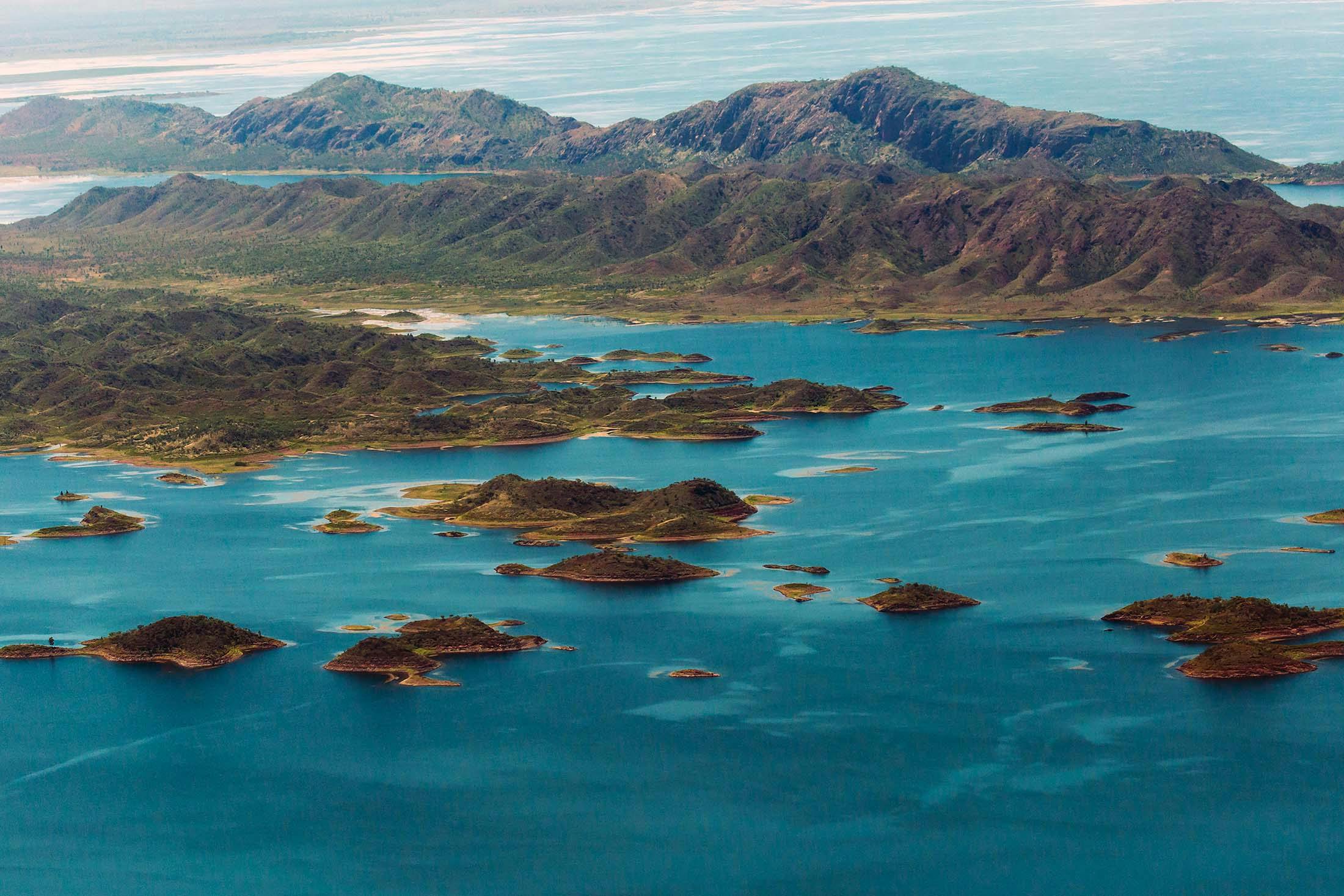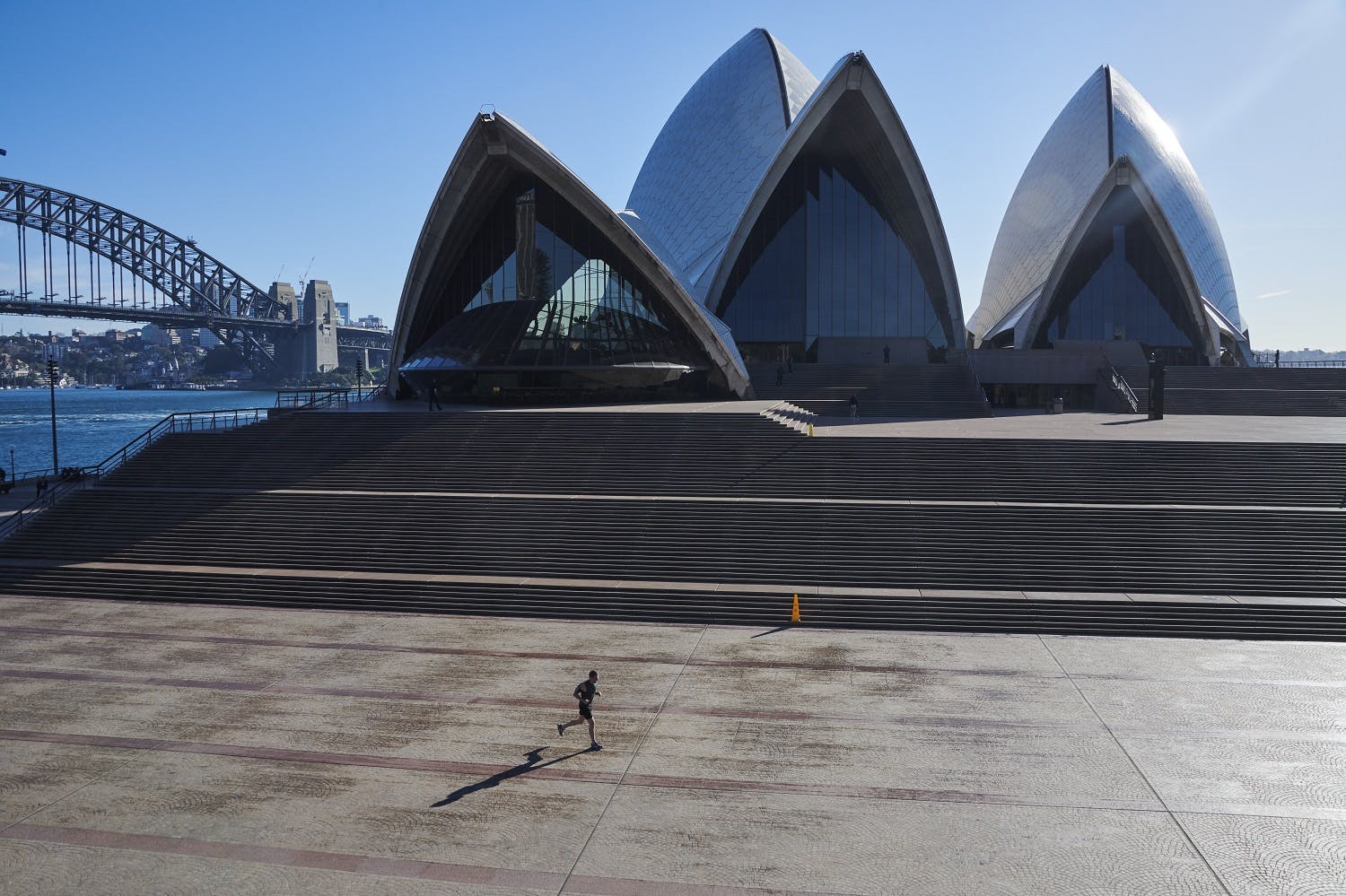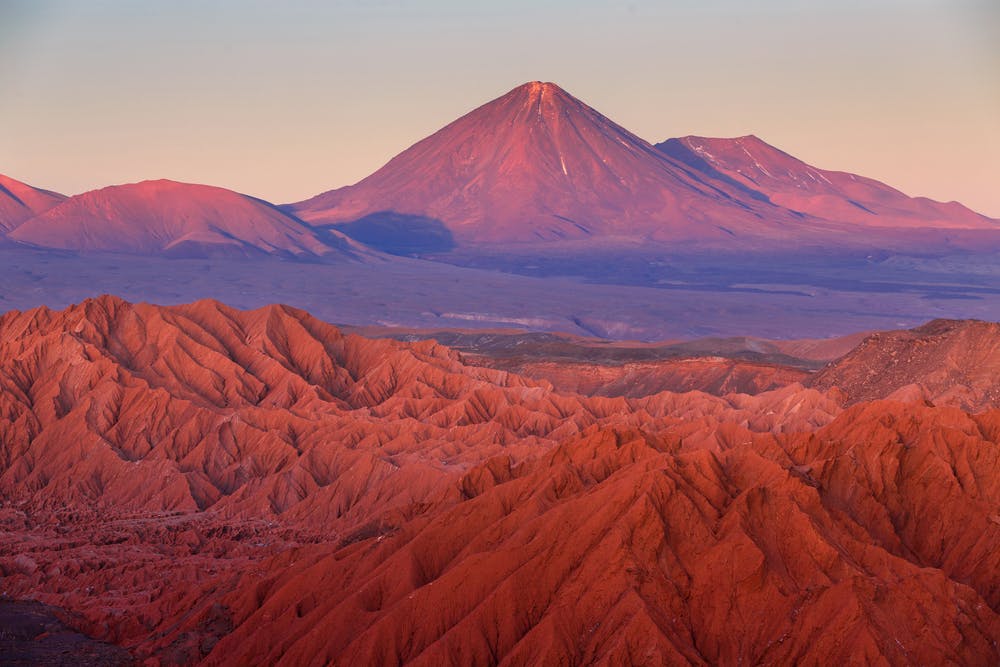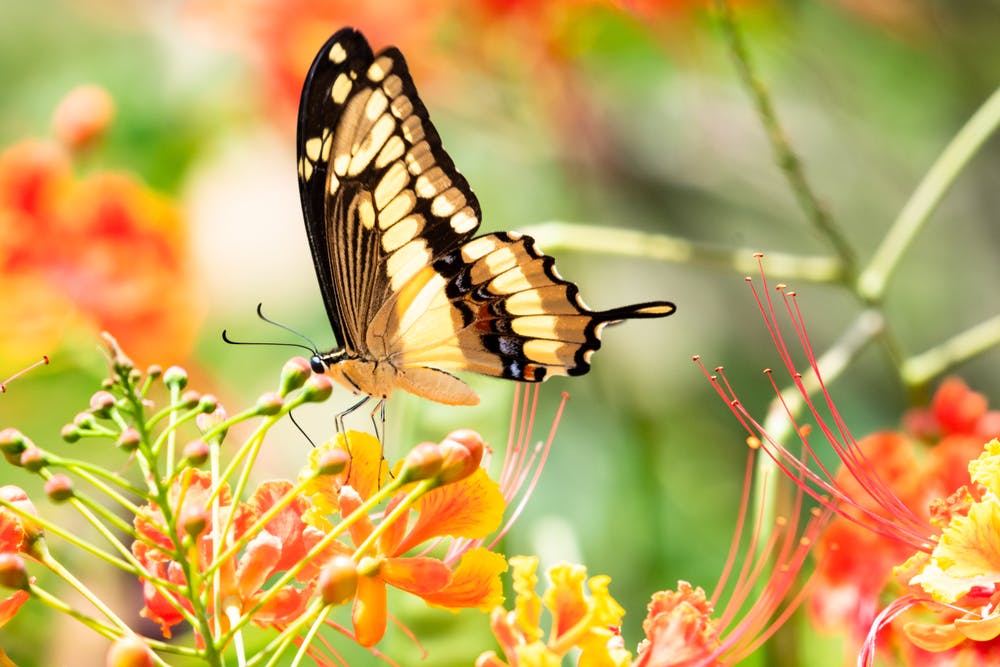What’s the Buzz? It’s the Bungle Bungle Range in Purnululu National Park
In Western Australia’s Purnululu National Park, hundreds of dome-shaped towers rise from the rust-brown earth like a city of enormous beehives. Sculpted over 20 million years by wind and water, the burnt orange and black striped rocks of the Bungle Bungle Range are what makes this World Heritage-listed park one of the most spectacular in the world.
From a light plane above, the sheer number and scale of these bulbous sandstone mounds become apparent. Rising up to 820 feet (250 meters) above the surrounding semi-arid savannah grassland, some of the domes are so tall and hive-like that you’d be forgiven for thinking giant, buzzing bees might suddenly appear. It’s pure magic to gaze dewy-eyed at the endless Kimberley landscape, such as the Montgomery Reef, as your pilot maneuvers over the fanciful rocks and sheer ridges textured by time.
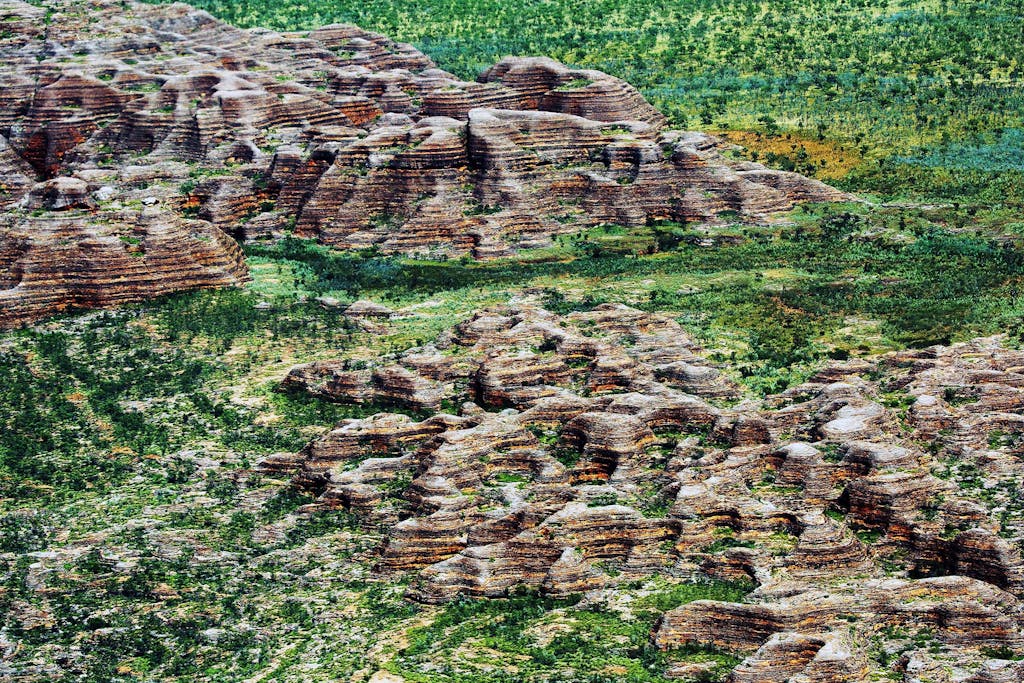
The outside world learns of the Bungle Bungle Range
Until the early 1980s, few people had heard of the Bungle Bungle Range. Tucked up against the Northern Territory border, with a rough dirt access track and located about 100 miles (150 kilometers) from the tiny Kimberley town of Halls Creek, the curved peaks and spinifex-dominated sand plains were mostly hidden from the world’s view.
It wasn’t until an airborne film crew captured this 925-square-mile (2,400-square-kilometer) slice of wilderness for their documentary “Wonders of Western Australia” in 1983 that the Bungle Bungle Range was introduced to the world. No doubt the ancestors of the Gija and Jaru peoples, who have had a persistent cultural connection to the area for tens of thousands of years, would have been astonished to learn that Purnululu had suddenly become so widely known. In 1987, this treasure was declared a national park, and 15 years ago it was inscribed on the UNESCO list for its “outstanding universal natural heritage values.”
As the crow flies, the western edge of the Bungle Bungle Range is about 20 miles east of the Great Northern Highway. “To think that this expansive, impressive landform remained ‘hidden’ for so long is remarkable, but it also doesn’t surprise me about the Kimberley,” says Silversea Expedition Team member Mike Cusack. “[The region] is three times the size of England, but has only 36,000 permanent residents — there are probably still places that non-Indigenous people have not yet ‘discovered.'”
Back in 1987, the expert guide headed into the remote Kimberley with his wife Susan, becoming the famous “wilderness couple” followed by Australian Geographic. For a year the couple lived virtually isolated at the former Presbyterian mission at Kunmunya on the rugged western Kimberley coast. Their pioneering work helped pave the way for Bungle Bungle’s tours today.
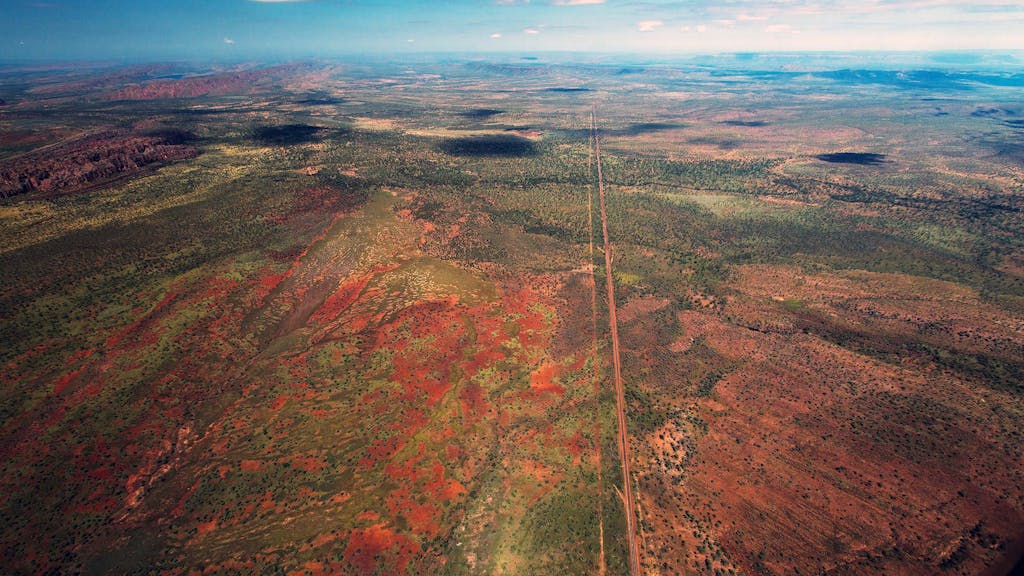
The striking colors of Purnululu
The Bungle Bungle Range occupies only about one-fifth of Purnululu, explains Cusack. Enormous chasms, deep gorges and endless spinifex plains dotted with mulga trees and fat-trunked boabs make up the remainder of the almost 600,000-acre (240,000-hectare) park.
Cathedral Gorge, an incredible natural amphitheater of red rock, Piccaninny Creek and the soaring Echidna Chasm are just three of Purnululu’s signature sites. As the sun passes over the narrow chasm of Echidna, it creates a soft golden light display on the high walls. Stunning Livistona palms hide Echidna’s entrance, where Rainbow Bee-eaters flit about, and a bowerbird redecorates its homemade palace. According to Bungle Bungle Aboriginal myth, the chasm was created when an echidna fleeing a tormenting cockatoo pushed against a small crack in a cliff face, which magically enlarged to form a deep fissure where the spiky creature could hide.
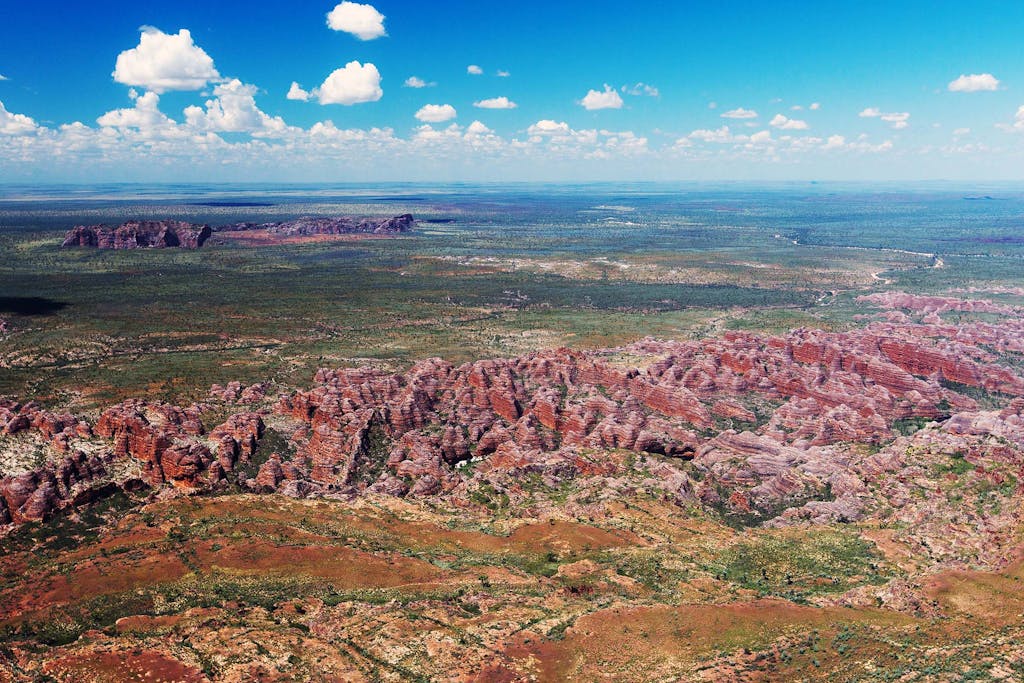
Breathtaking landscapes on land and from the air
Despite having visited the park several times so far, Cusack says the Bungle Bungle Range never ceases to amaze him. “There are other cone karst formations around the world but none to this extent, scale or grandeur,” he says. “The improbable shapes, the alternating banding, the differential erosion determined by the prevailing wind has created this unrivaled natural feature.”
Cusack recommends viewing “the Bungles” from above. “From the air, the extent, scale and ‘setting’ of the range as an ecological interface between the arid inland desert and the more monsoon-influenced savannah to the north and west, and its remarkable landforms make it a wondrous sight,” says Cusack.
But it also makes for a wondrous sight on the ground. When the four-wheel-drive-only road access to Bungle Bungle opens each April after the wet season, the vegetation is at its freshest, and there is water in the pools. “From the ground one is really immersed in the slightly bizarre landscape, dwarfed by the towering cones, particularly in the often very narrow gorges,” Cusack says. Hiking the Bungle Bungle Range is akin to exploring an alien landscape. “The seemingly out-of-context livistona fan palms add to the bizarre aspect.”
In the heat of the day, the scent of sweet wattles flavors the air, and if you lean in close to the steeply sloped domes, a delightful earthy smell fills your head. Cusack adds, “For me, these beehive formations cannot help but inspire and reaffirm my wonder of the natural world.”
In the heat of the day, the scent of sweet wattles flavors the air, and if you lean in close to the steeply sloped domes, a delightful earthy smell fills your head. Cusack adds, “For me, these beehive formations cannot help but inspire and reaffirm my wonder of the natural world.”

Purnululu National Park combines spectacular scenery, unique flora and culturally significant history, making the rugged landscape of the Bungle Bungle Range a compelling and memorable place to explore — by land and by air — as you travel by sea along the Western Australia coast.
Curious about Purnululu National Park? Explore the Kimberley coast on an expedition cruise.



